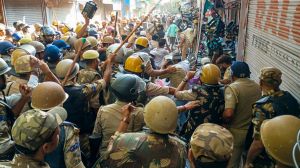US warns of 200 N Korean missiles pointing at Japan
The US government has warned Japan that North Korea has positioned 200 medium-range Rodong missiles to target Japan, a report said today, qu...

The US government has warned Japan that North Korea has positioned 200 medium-range Rodong missiles to target Japan, a report said today, quoting a foreign ministry official here.
Washington had earlier told tokyo that pyongyang already possessed small nuclear warheads that could be mounted in ballistic missiles, the nihon keizai shimbun said. The Rodong has an estimated range of 1,300 kilometres, which makes it capable of hitting anywhere in Japan.
South Korea’s yonhap news agency reported today that North Korea had told the united states it had completed reprocessing spent fuel rods to extract plutonium for nuclear weapons.
The agency also reported that N Korea has reprocessed all 8,000 spent fuel rods stored at its Yongbyong nuclear complex, giving the Communist state the means to make more atomic weapons.
According to the Yonhap, Chang Sung-Min, a top intelligence aide to former South Korean President Kim Dae-Jung, said UN-based North Korean diplomats had told US officials that the operation had just been completed. ‘‘North Korean delegates told US officials in an unofficial meeting in New York on July 8 that the reprocessing of spent fuel rods was completed on June 30,’’ Chang was quoted as saying.
Officials from South Korea’s presidential office and the Unification Ministry had no immediate comment on the report.
Washington and Seoul are trying to draw North Korea into talks aimed at negotiating an end to its plans to acquire nuclear weapons. Intelligence reports have estimated that the isolated, impoverished state has already built one or two such weapons.
If confirmed, the latest Yonhap report would show the North Koreans had made more progress than previously suspected in stockpiling the raw material for making nuclear arms. South Korea’s intelligence agency told Parliament last week it estimated that the North had recently reprocessed a small number of the 8,000 spent fuel rods stored at Yongbyon, a city 75 km north of Pyongyang.
The rods were part of a plutonium-based nuclear weapons programme that was frozen under a 1994 nuclear agreement between North Korea and the US.
The pact unravelled earlier this year after US revelations of a covert N Korean scheme to enrich uranium for bomb-making.
The latest Yonhap report follows one by Japan’s Kyodo news agency on Saturday, citing US sources as saying air samples taken close to Yongbyon had shown traces of krypton 85, a reprocessing by-product.
Citing Chang, now a US-based academic, Yonhap said that the North Koreans in New York had also repeated Pyongyang’s insistence that the US agree to direct one-to-one talks to resolve the nuclear standoff. (Reuters)





- 01
- 02
- 03
- 04
- 05


























